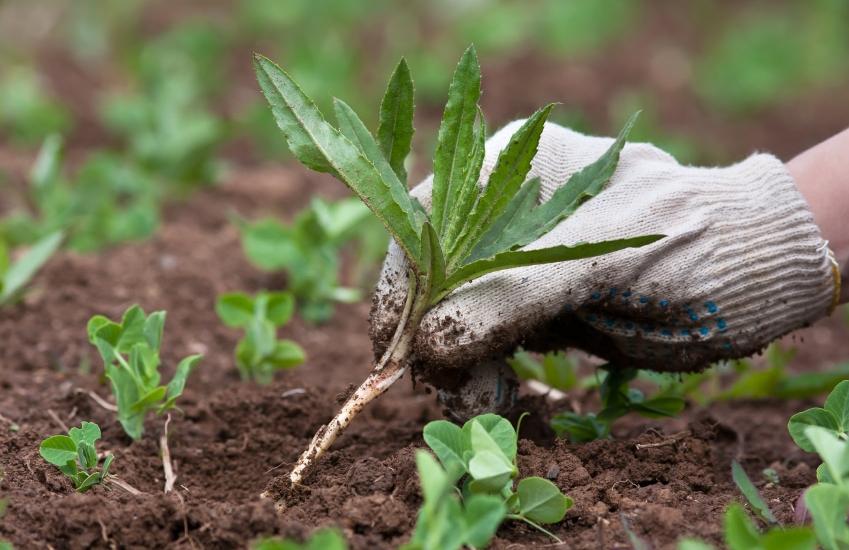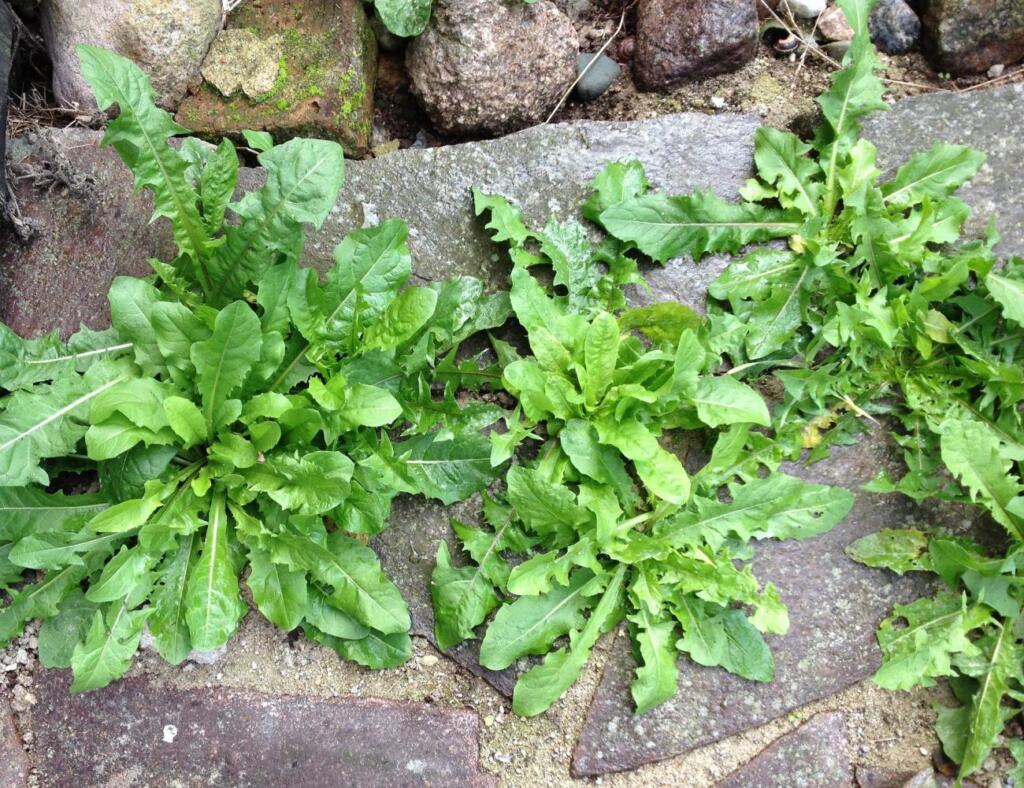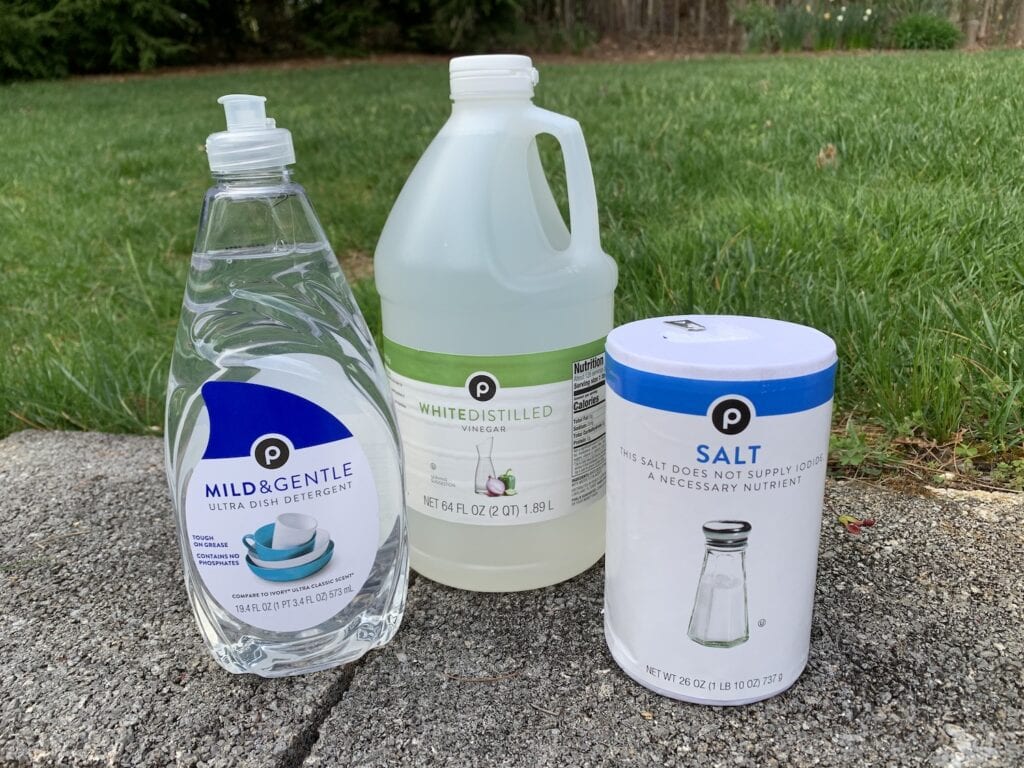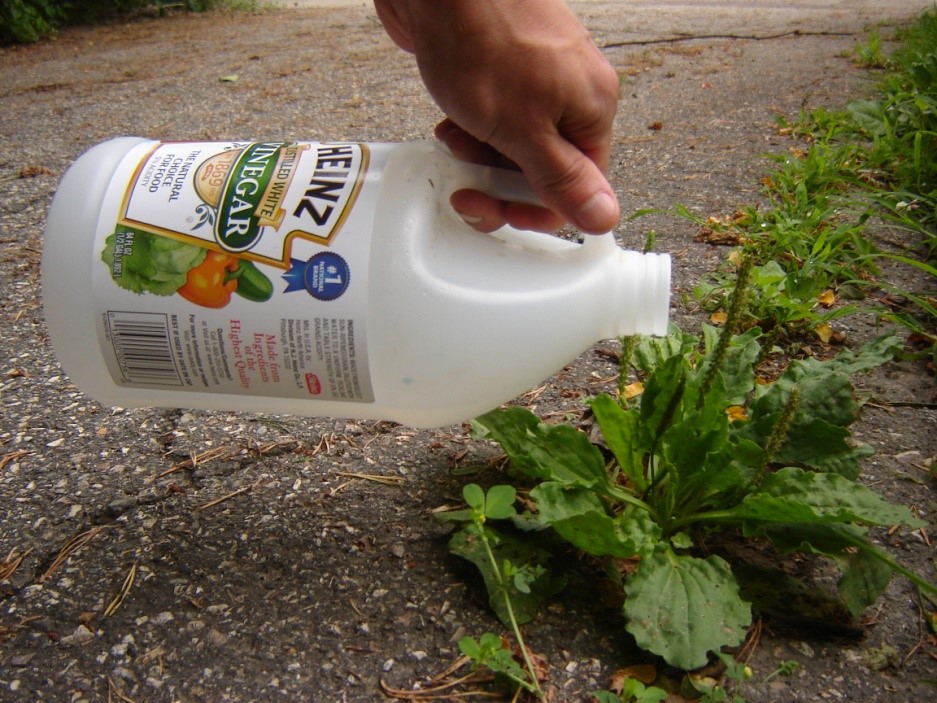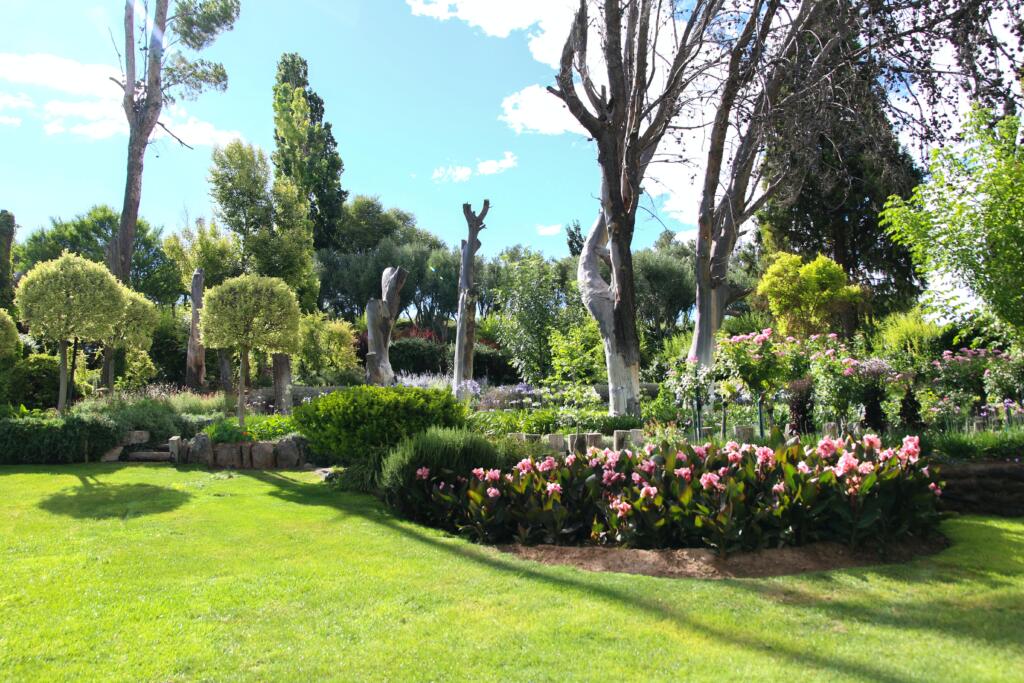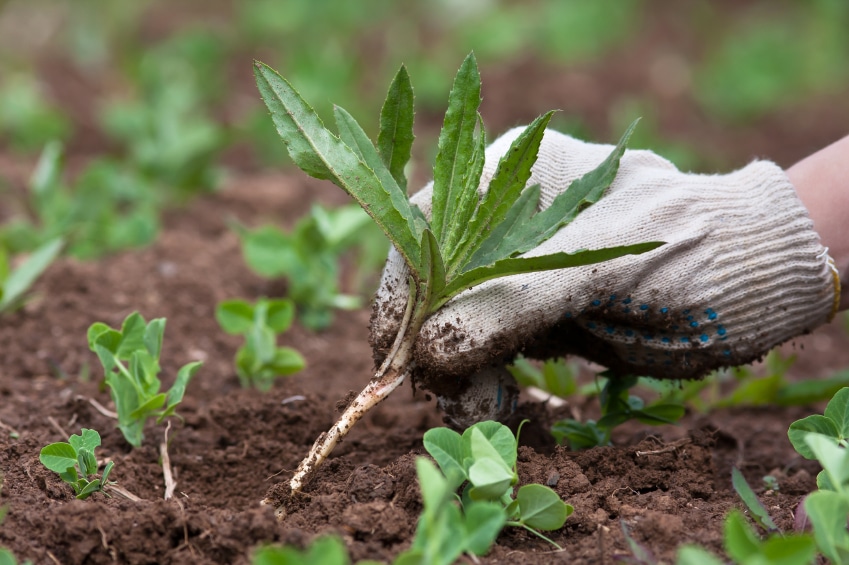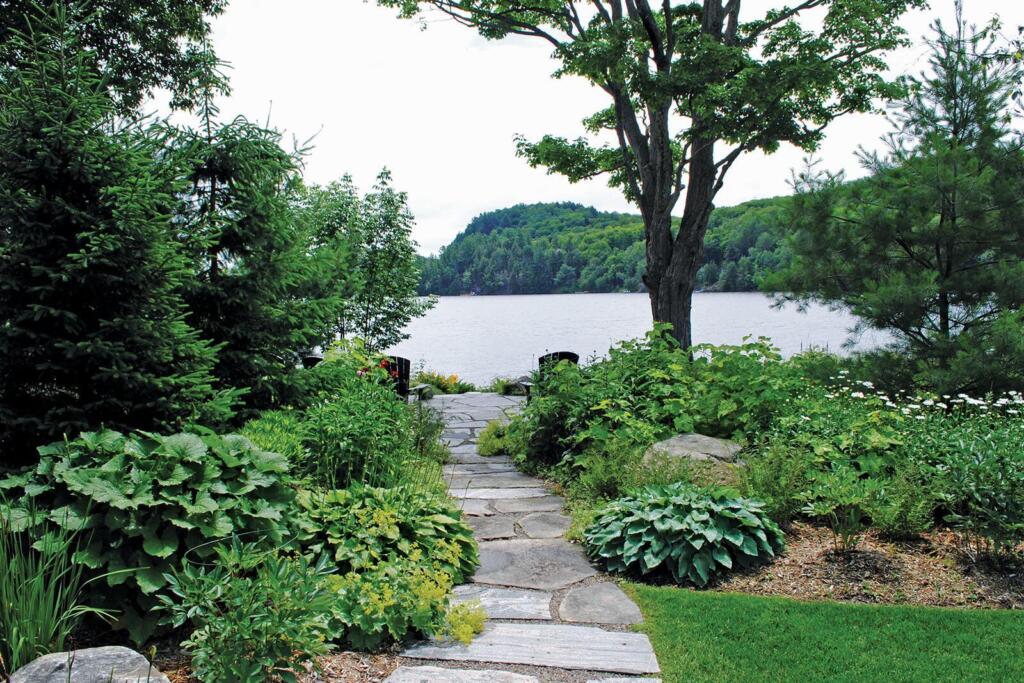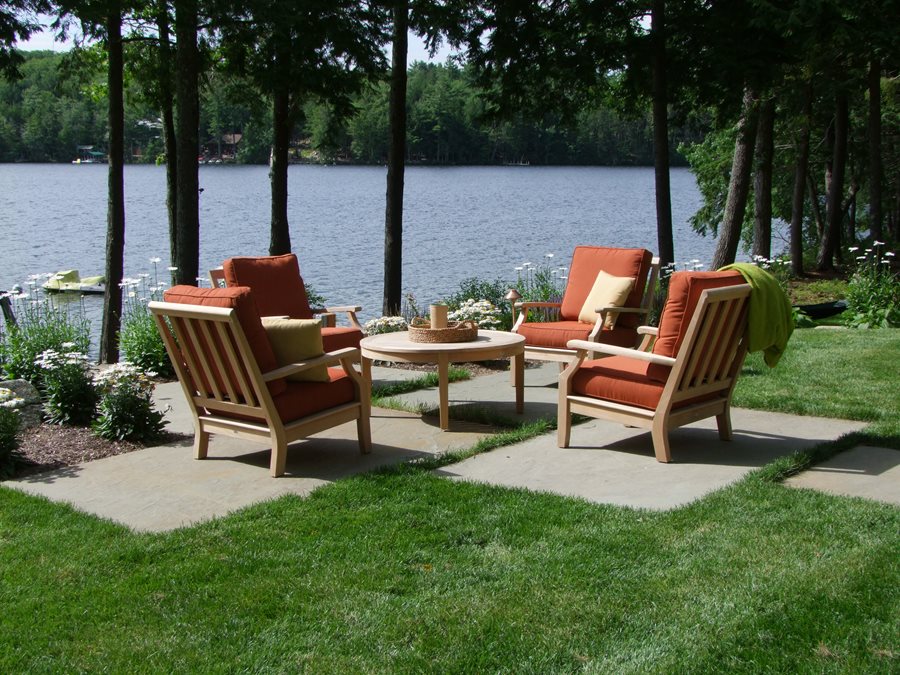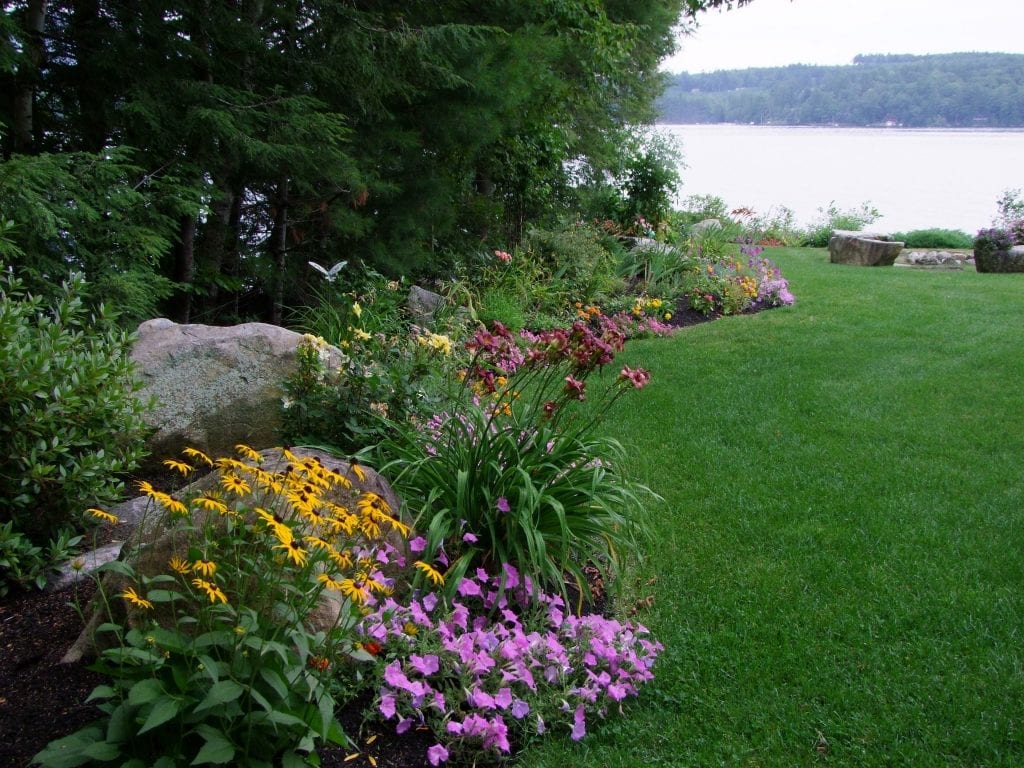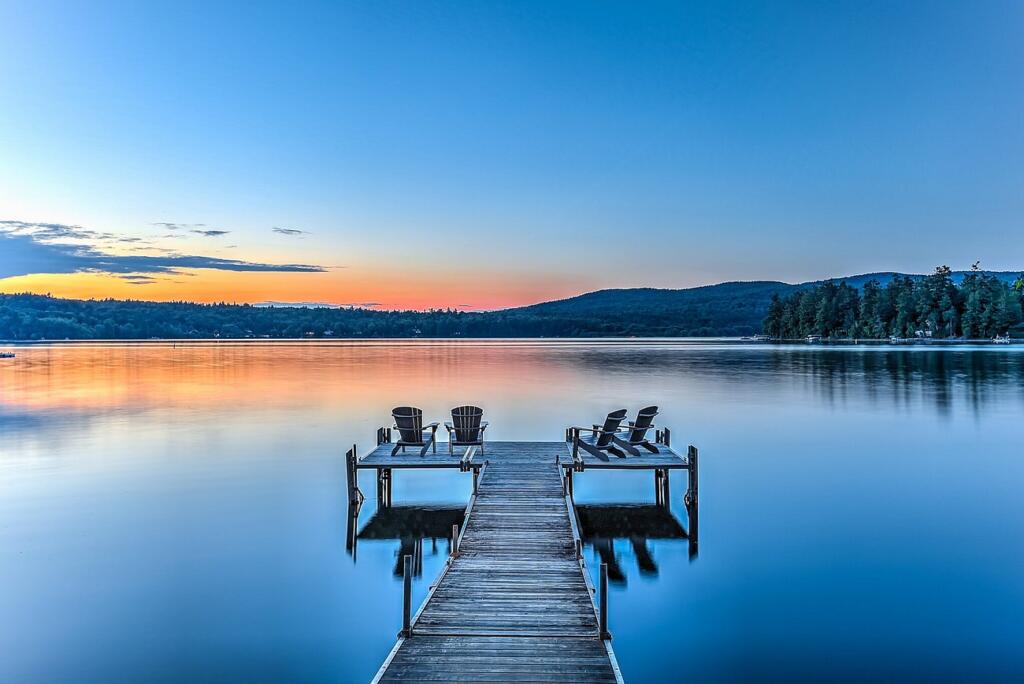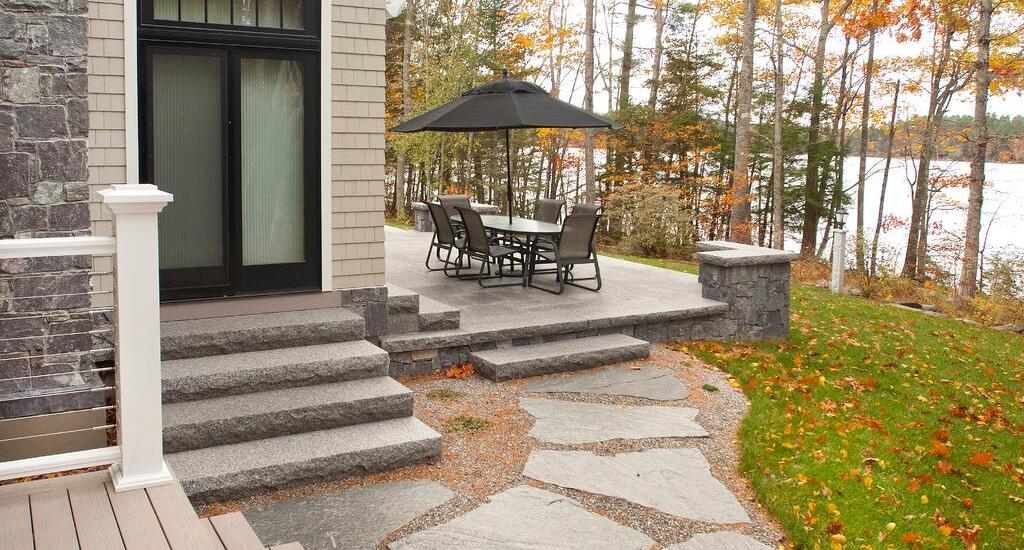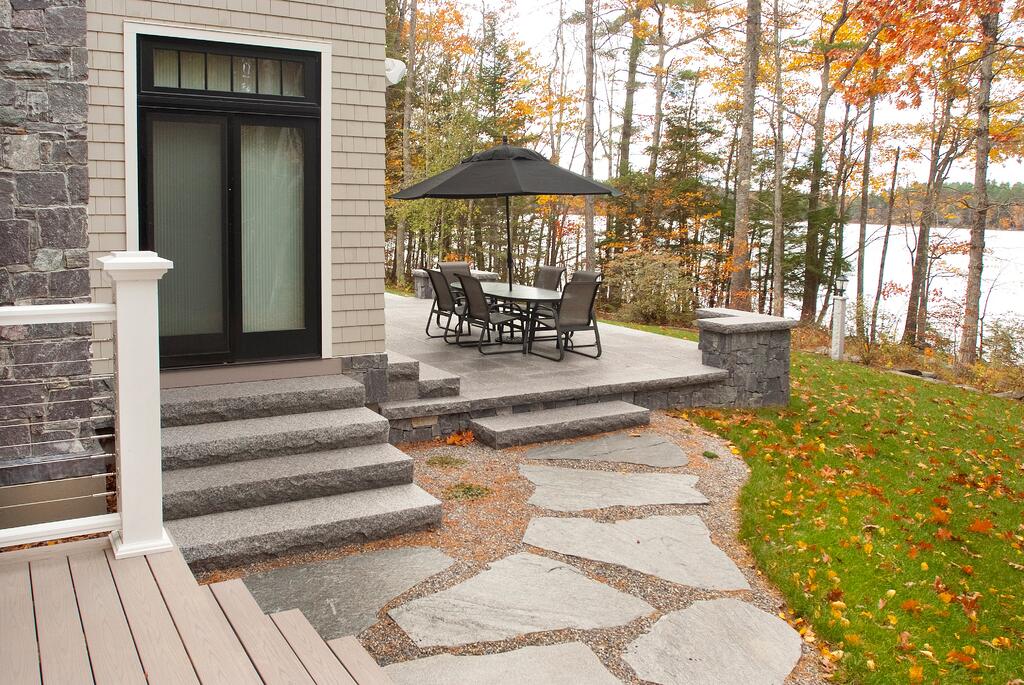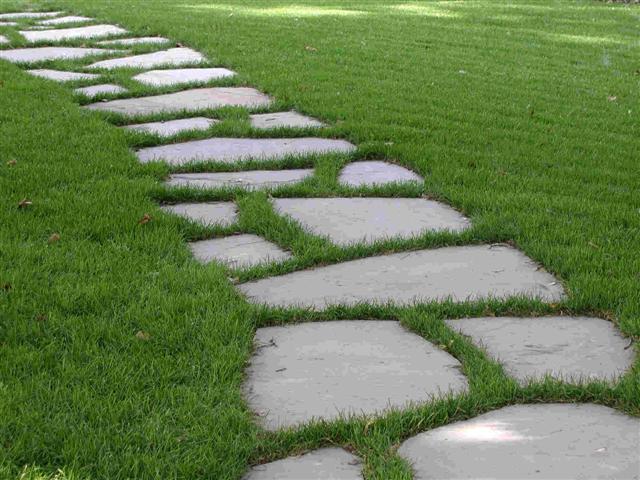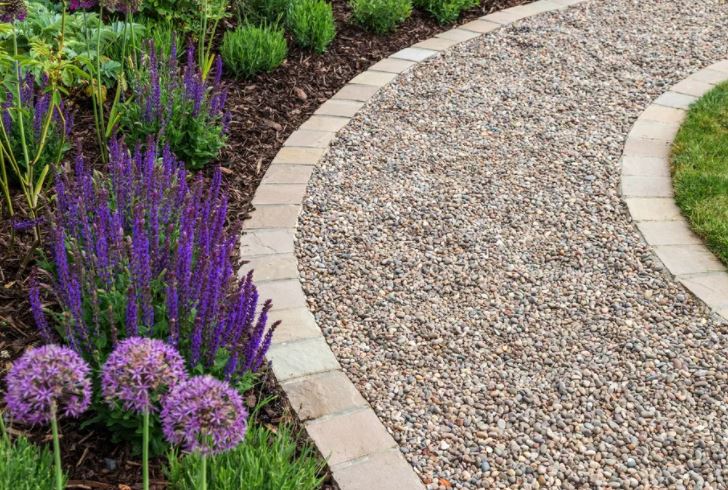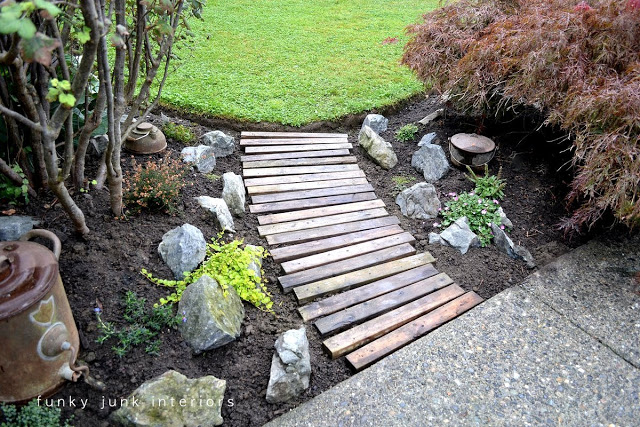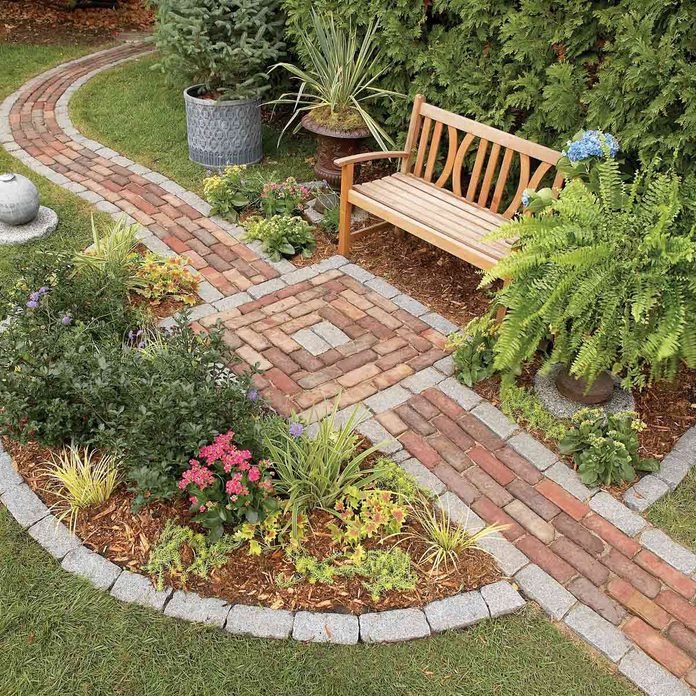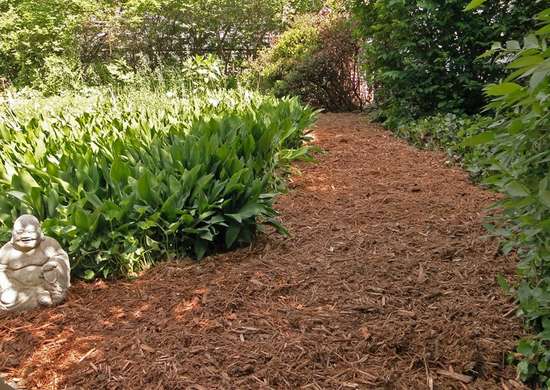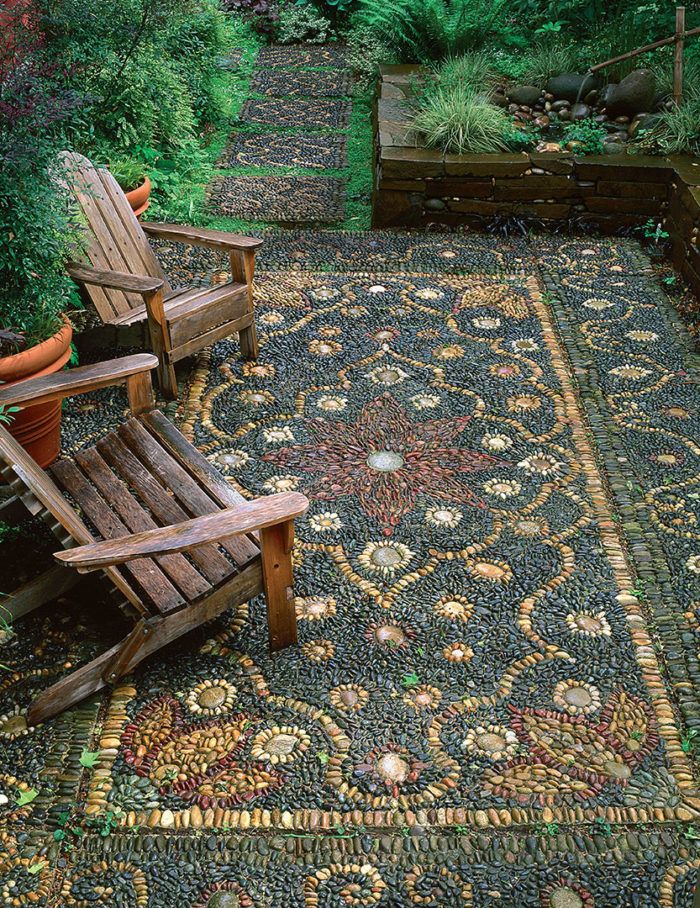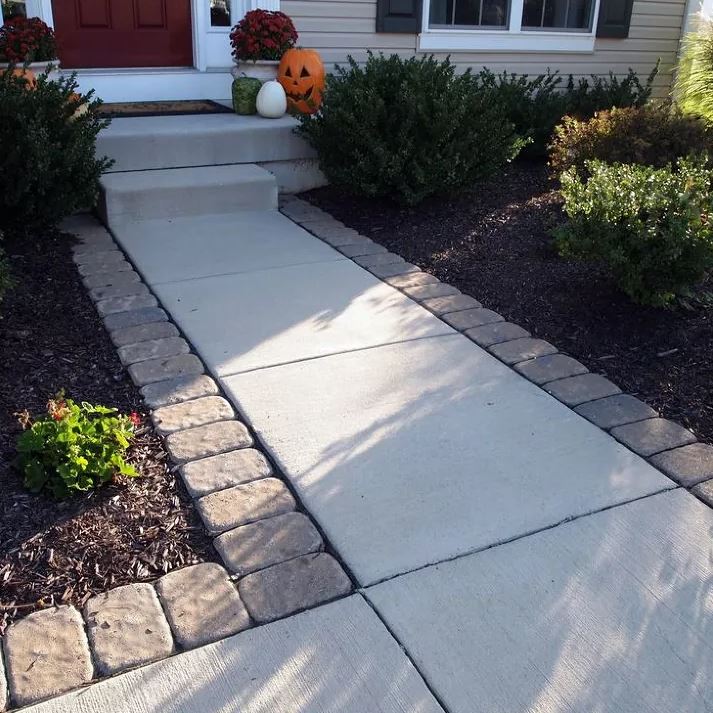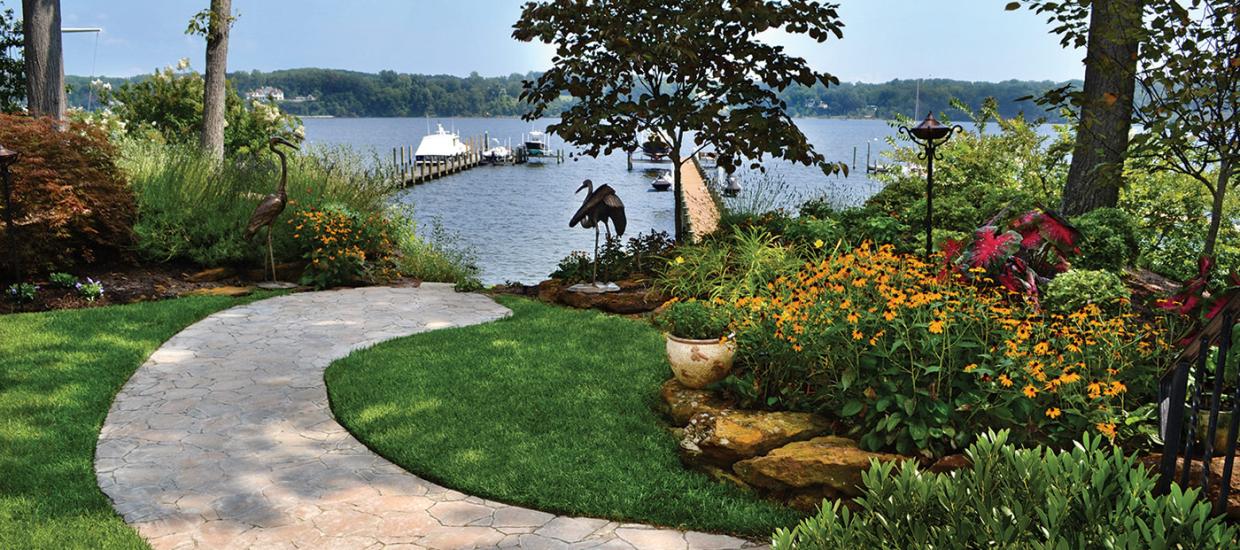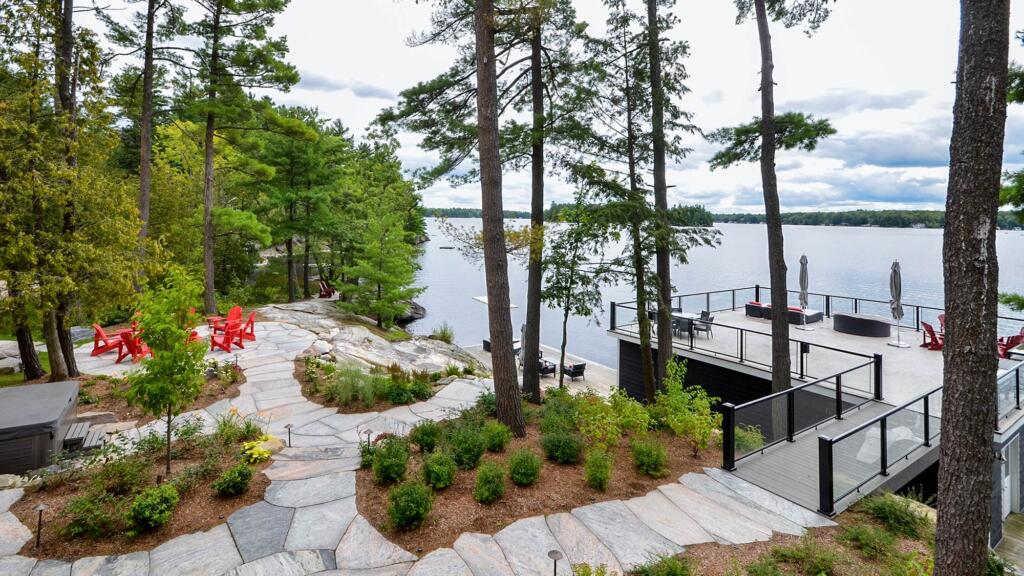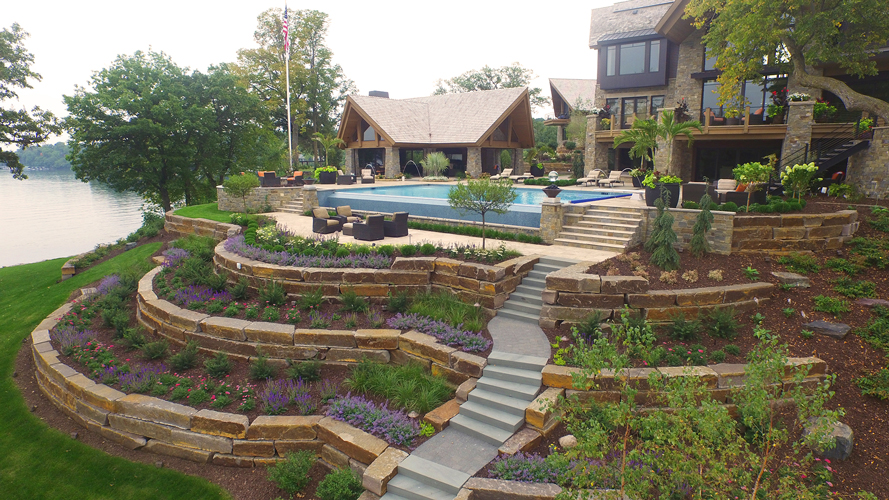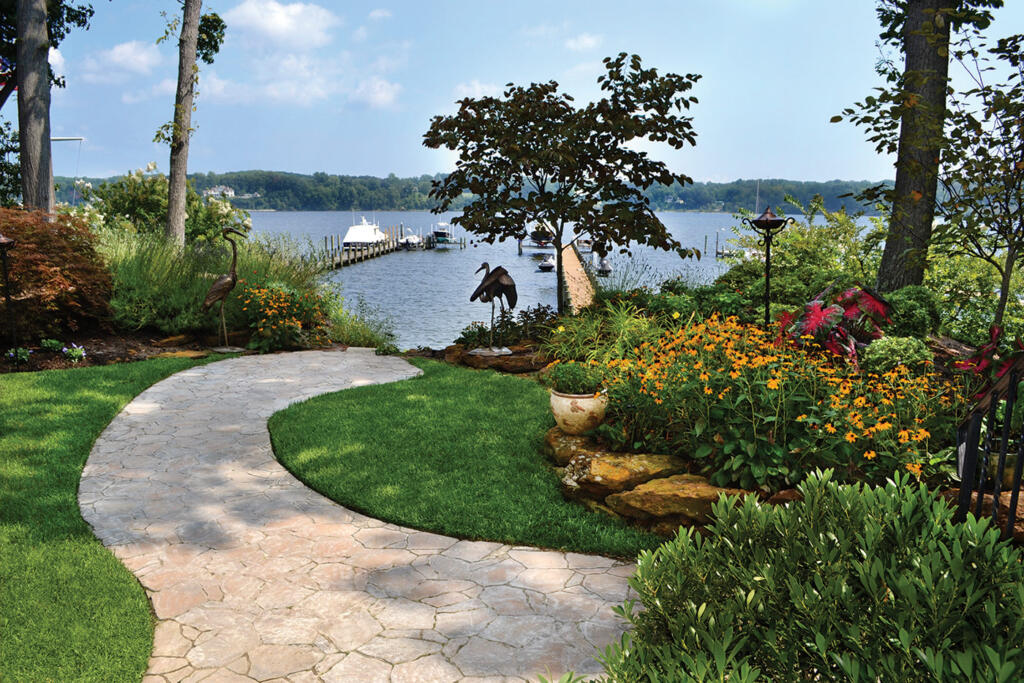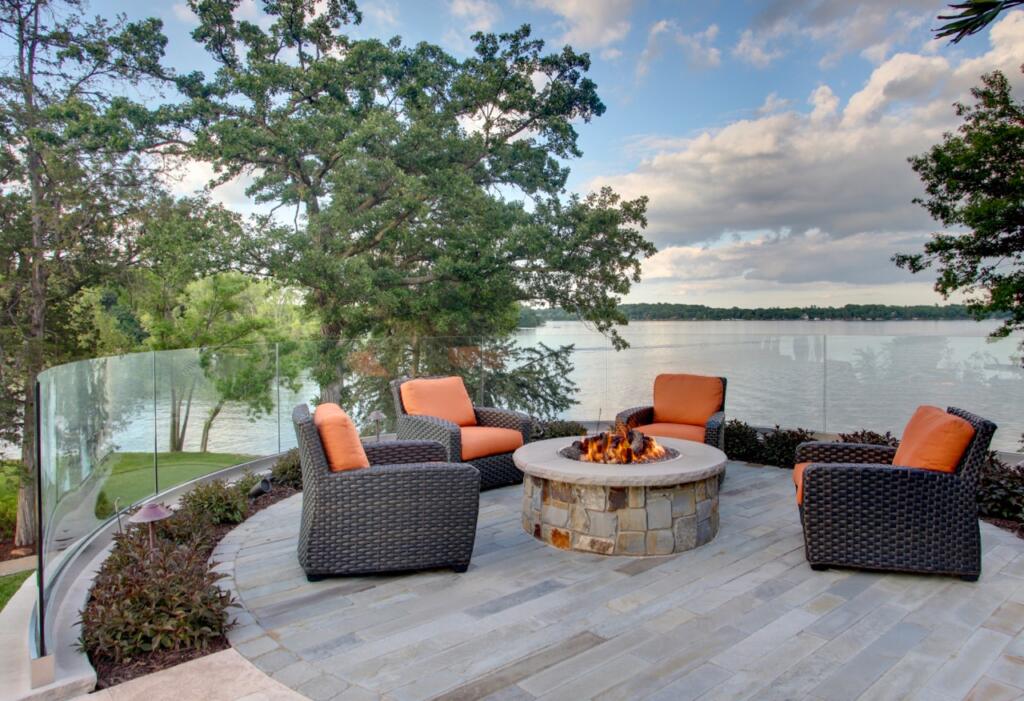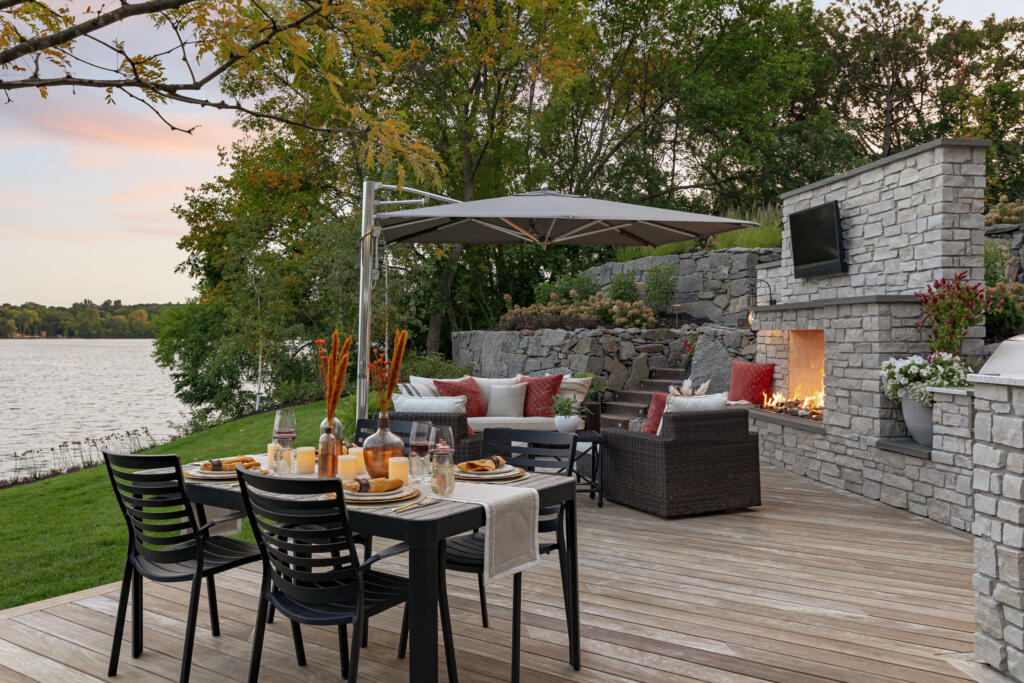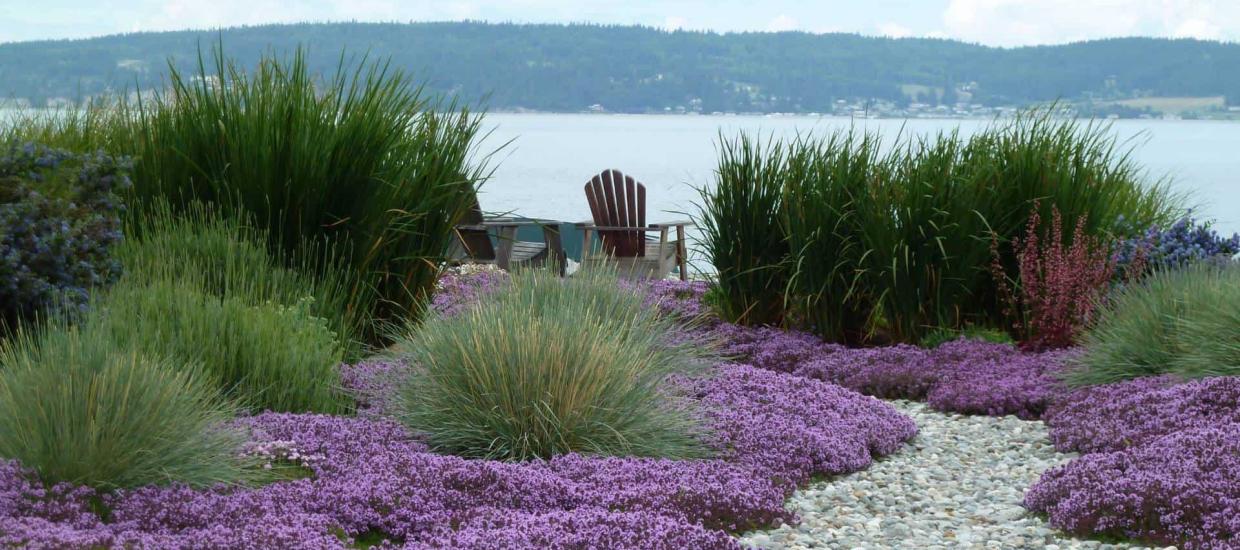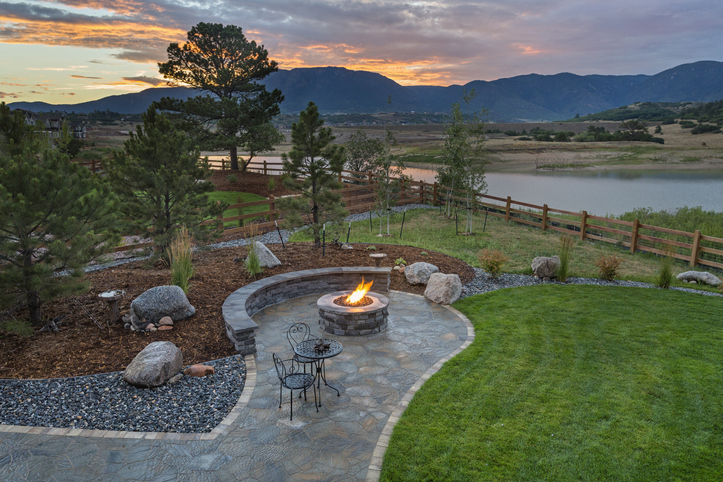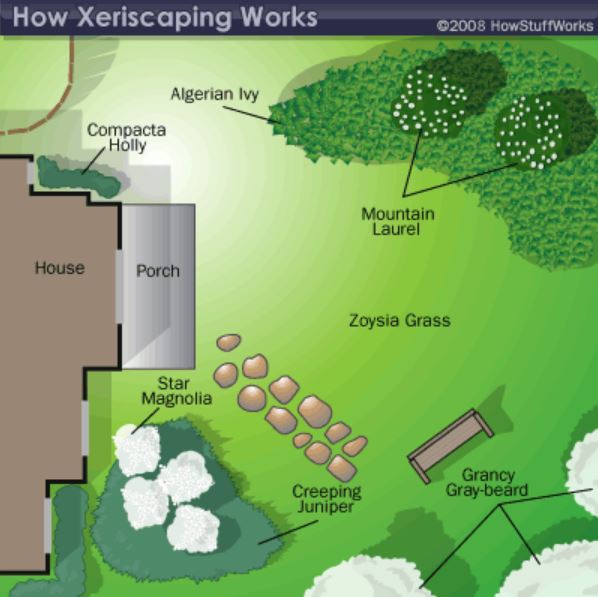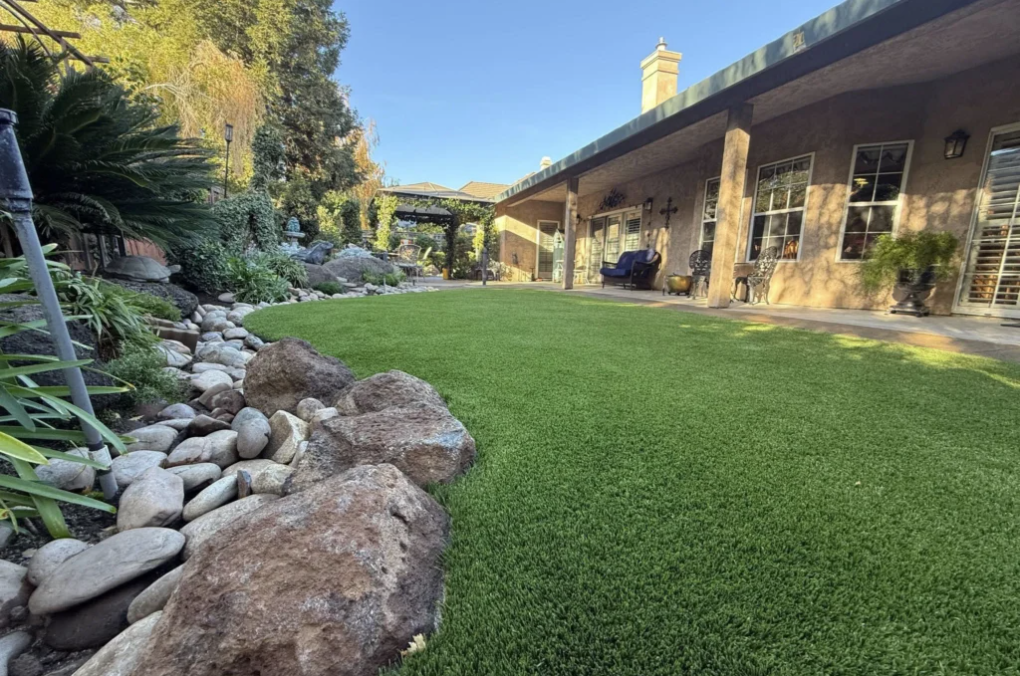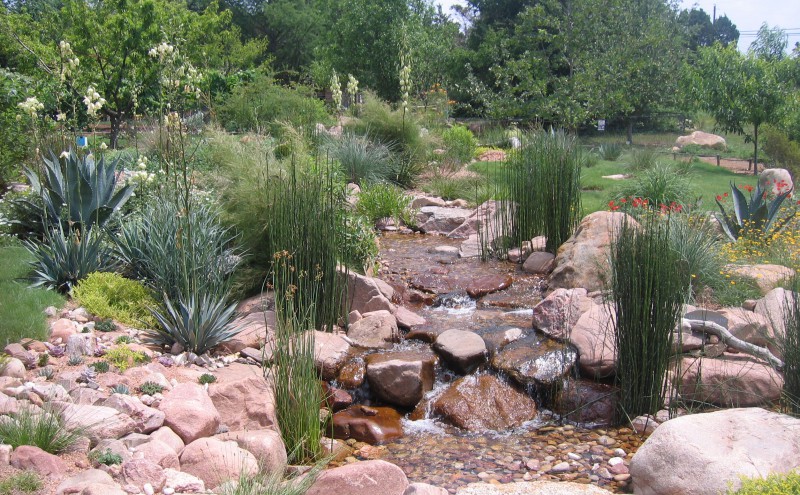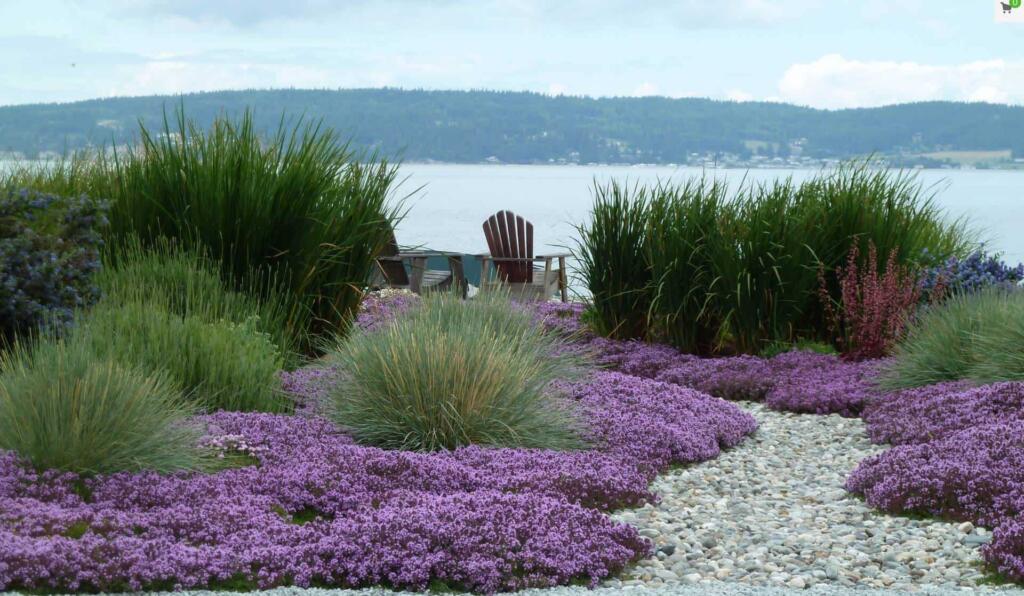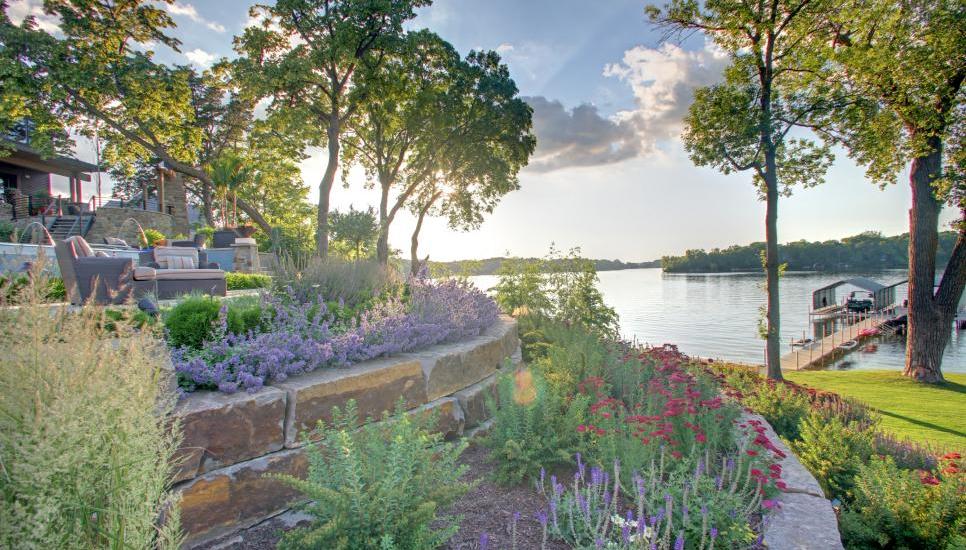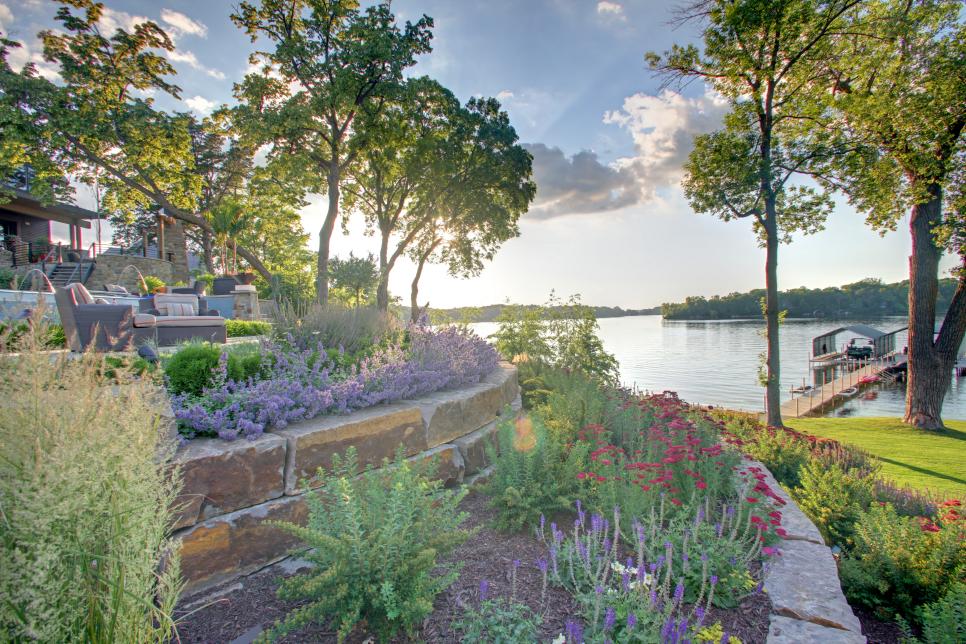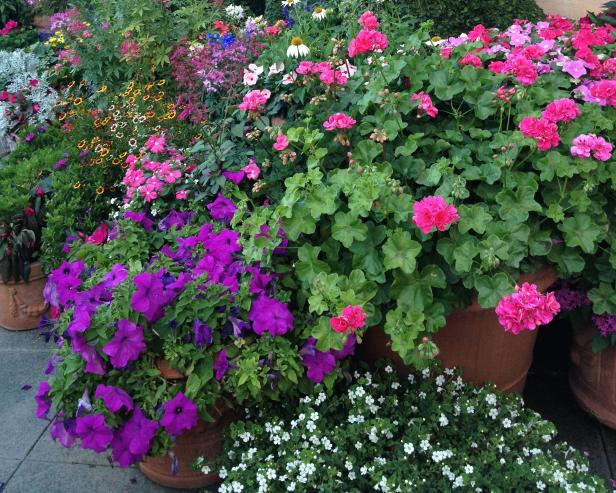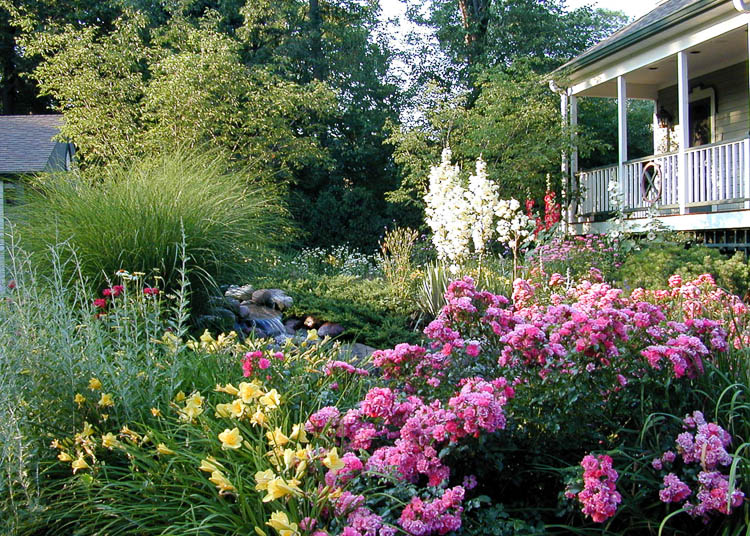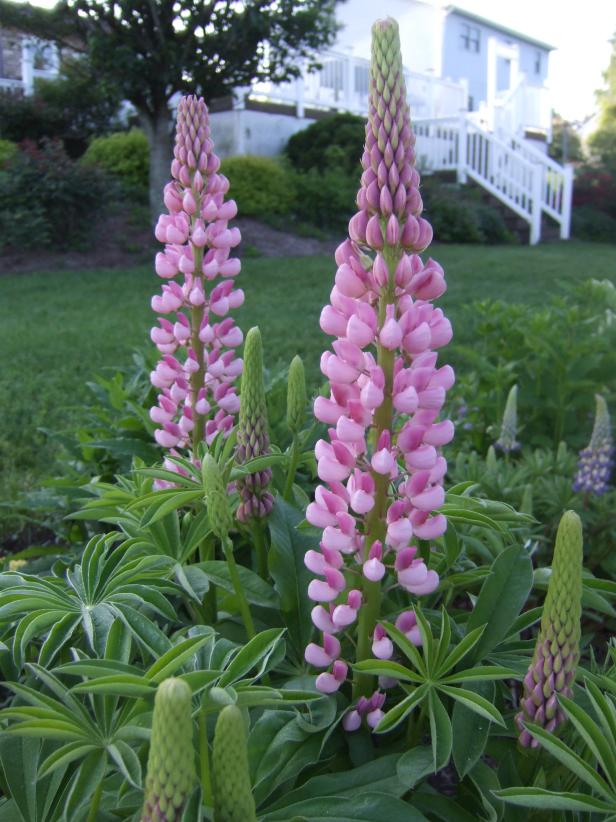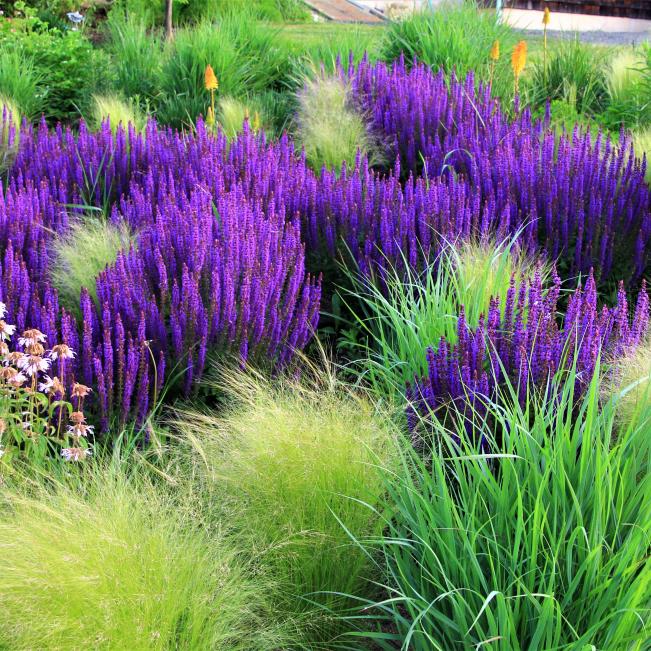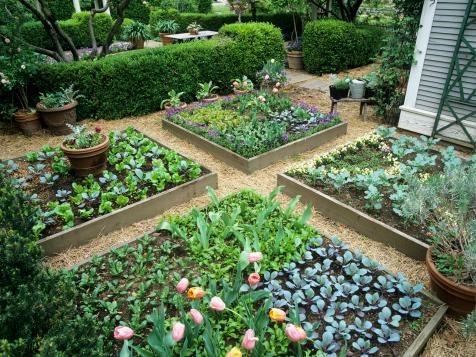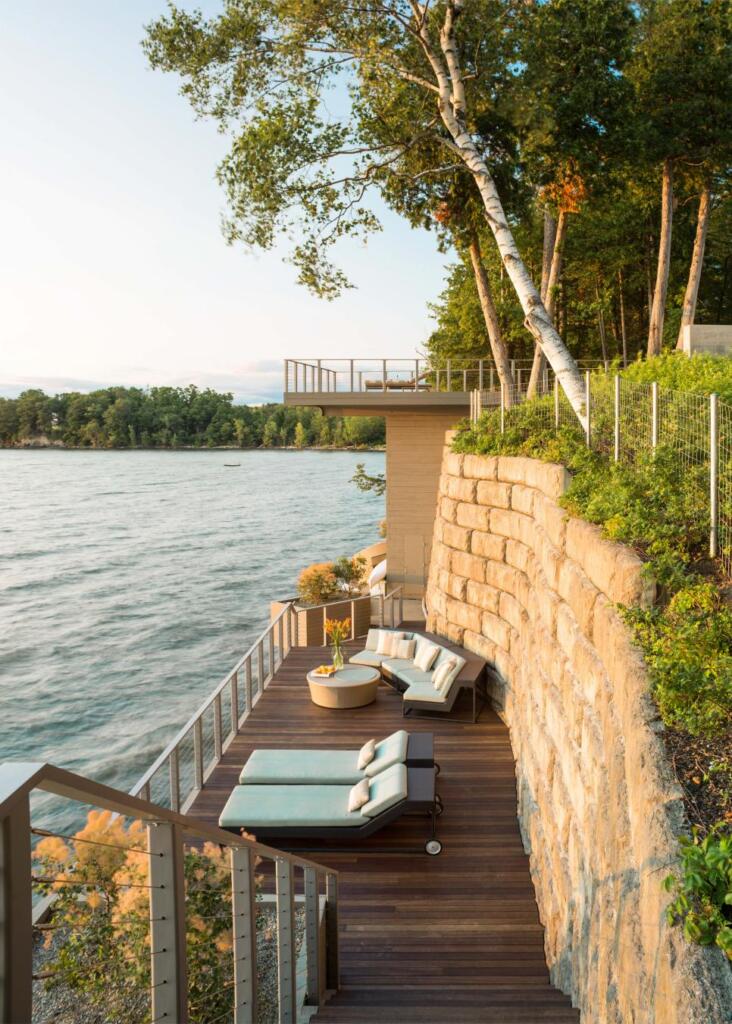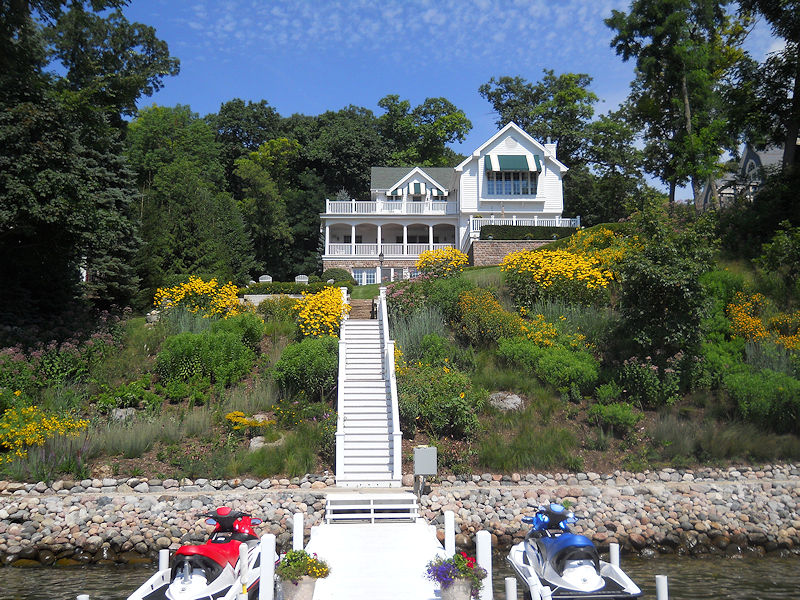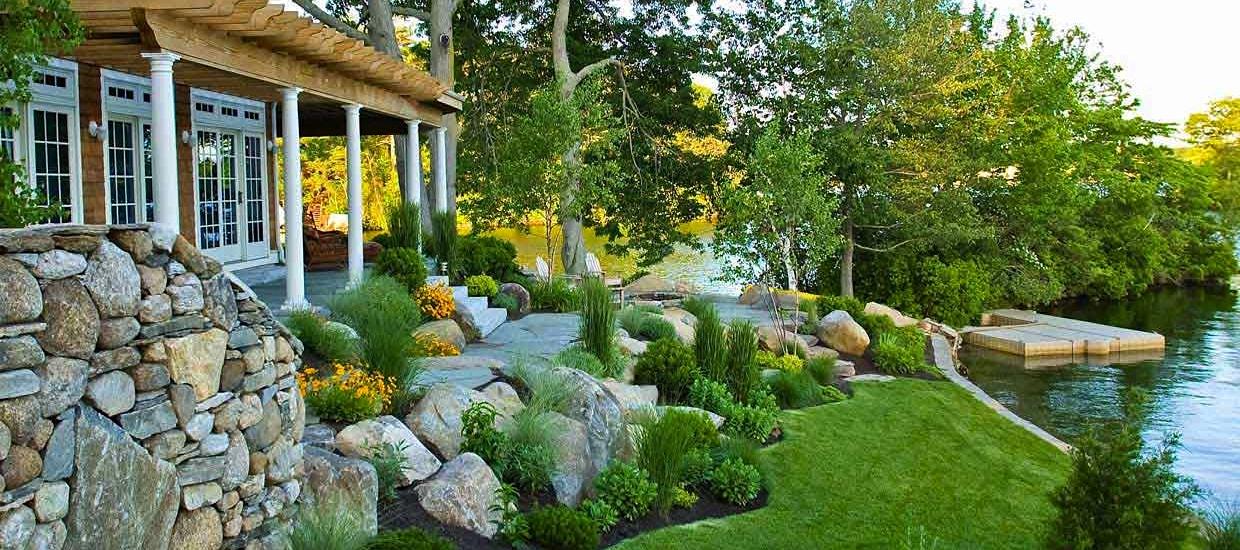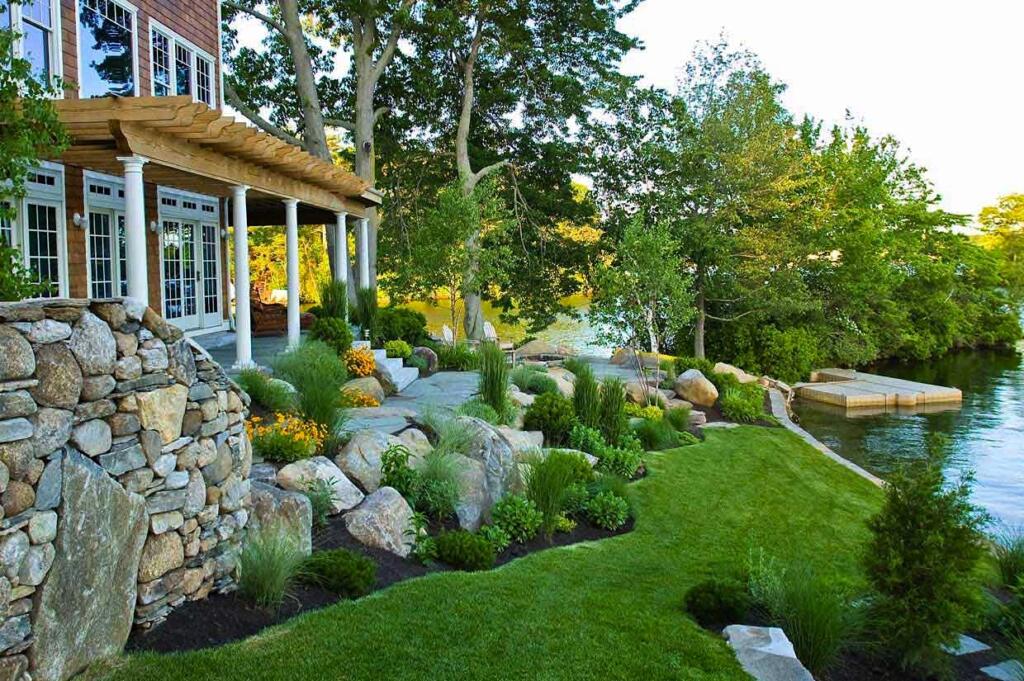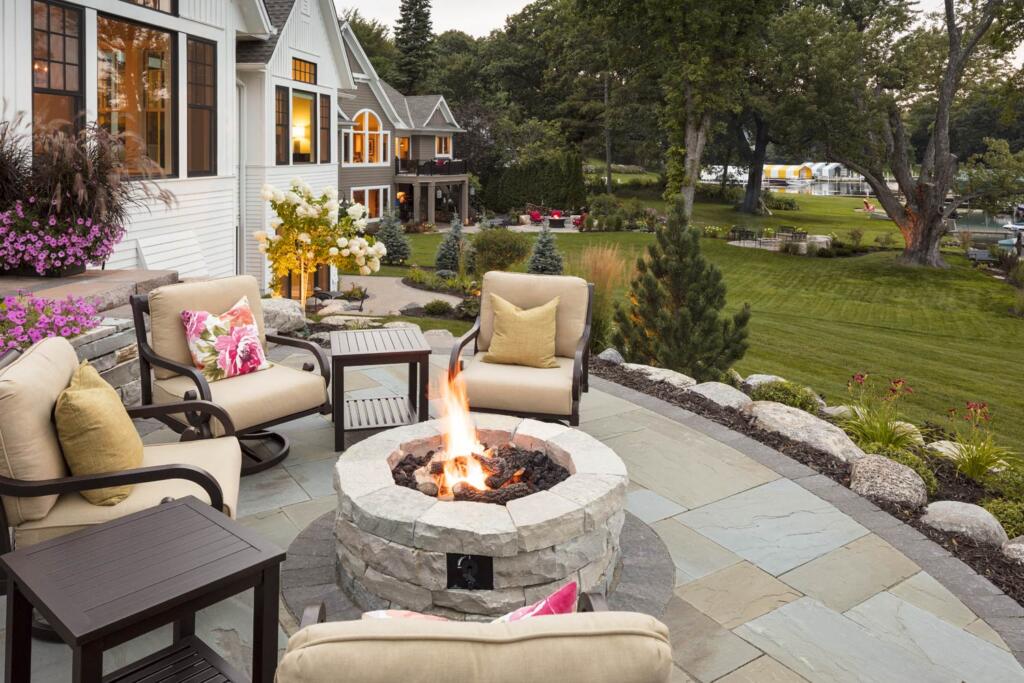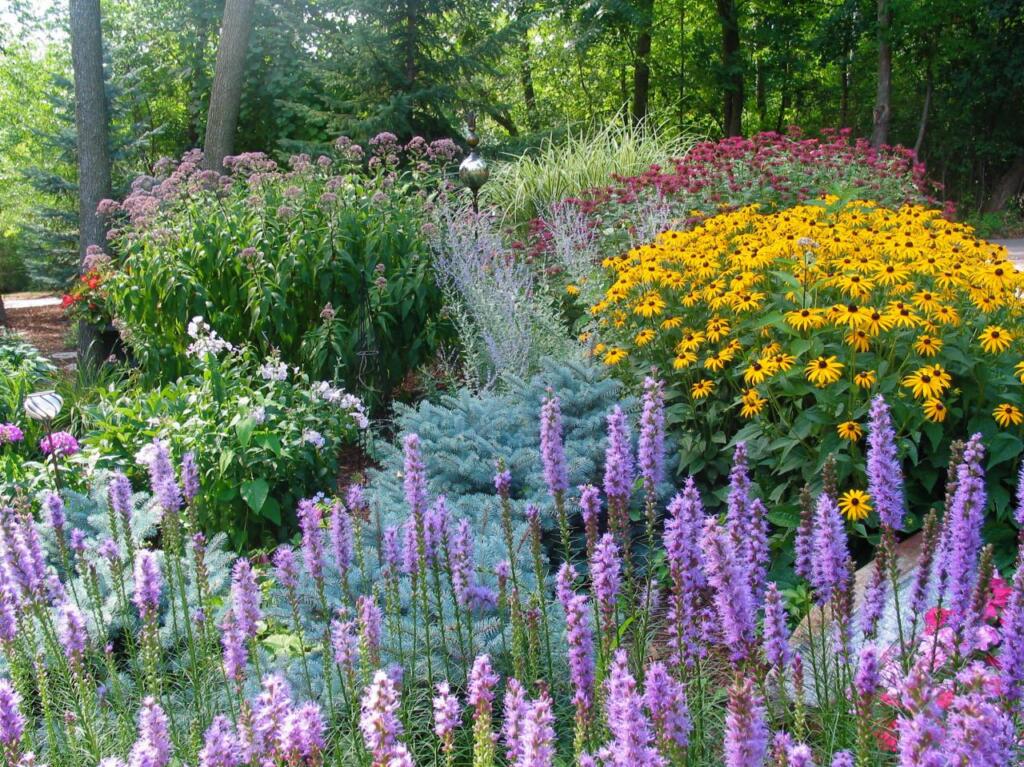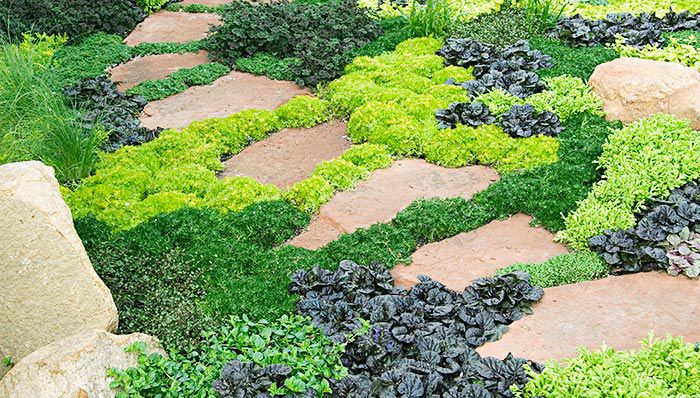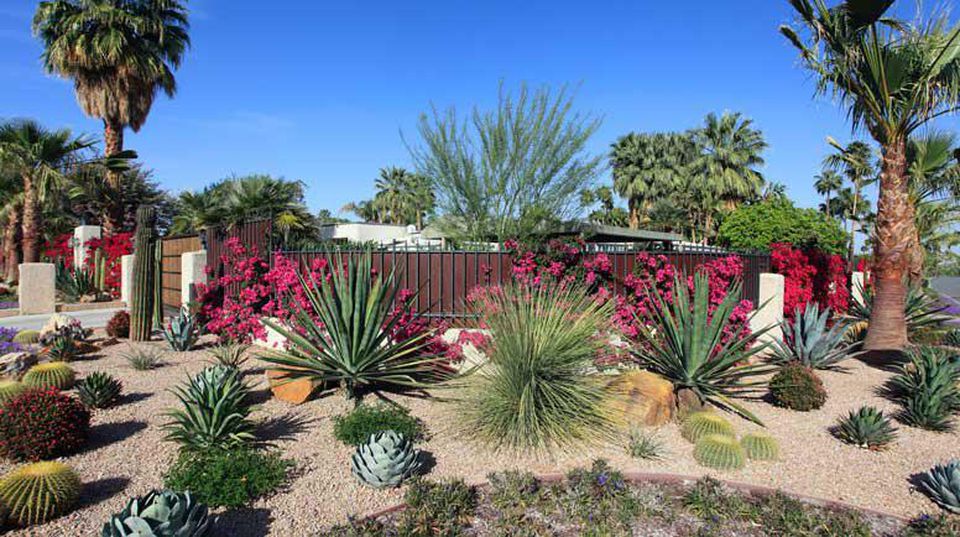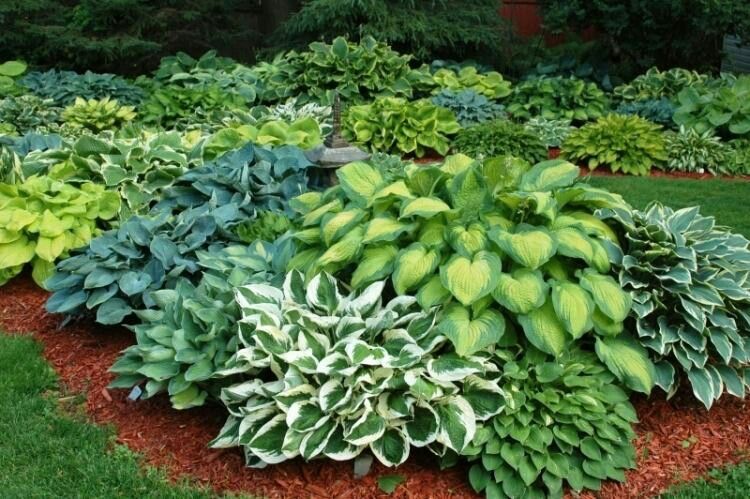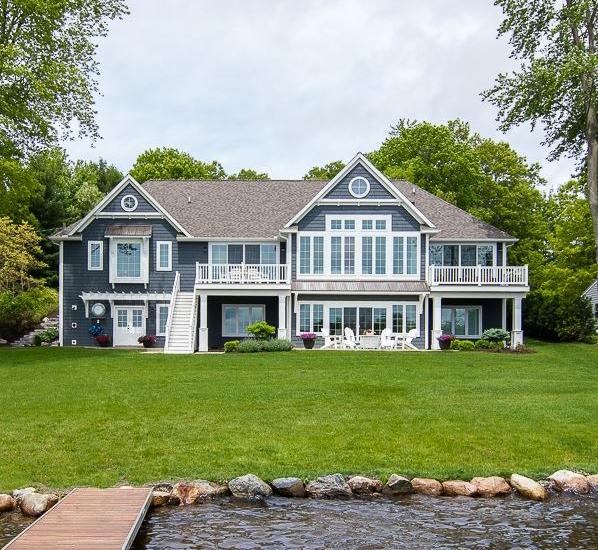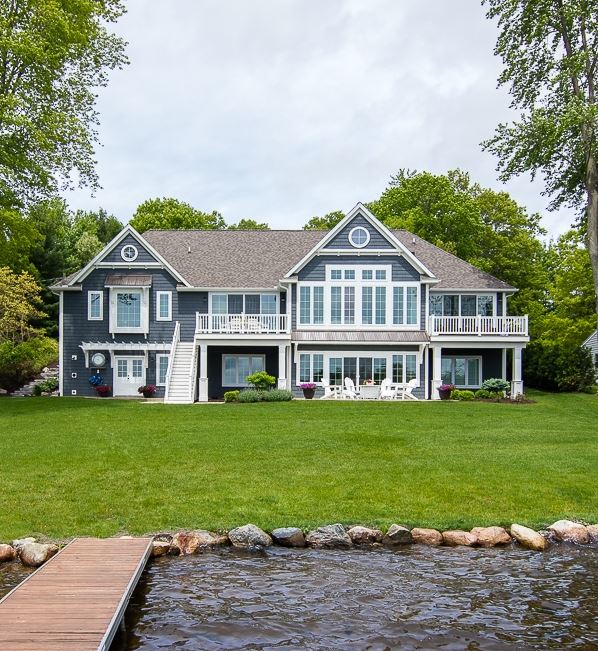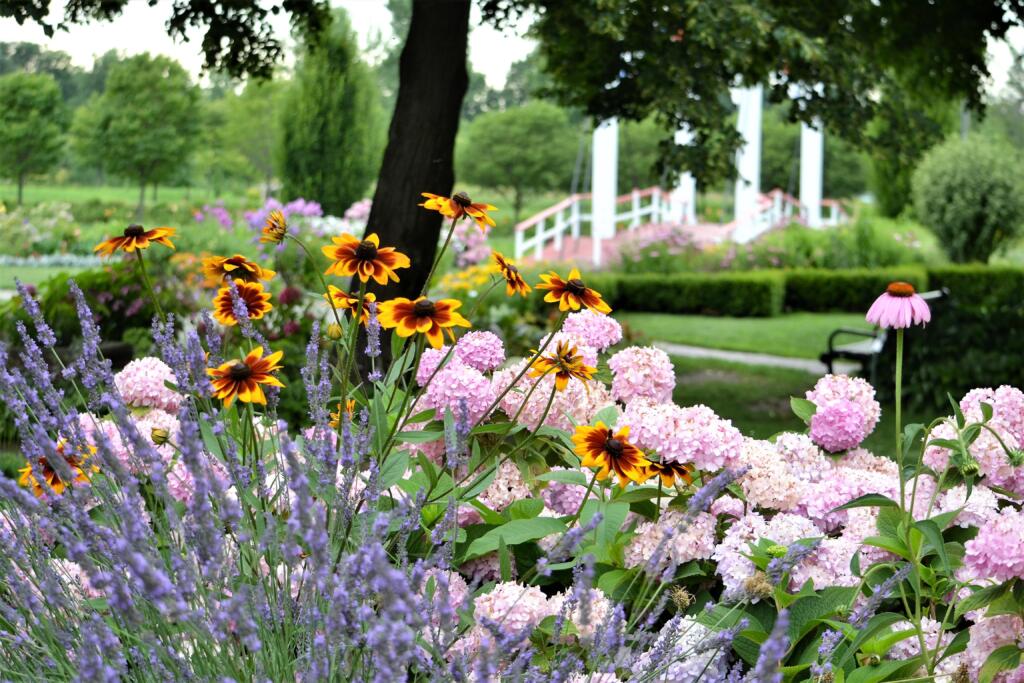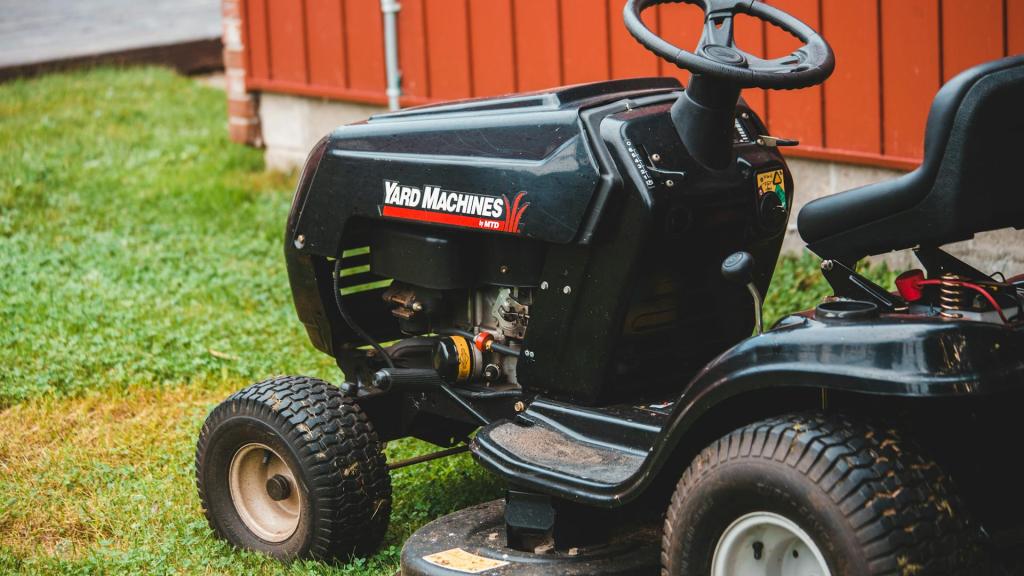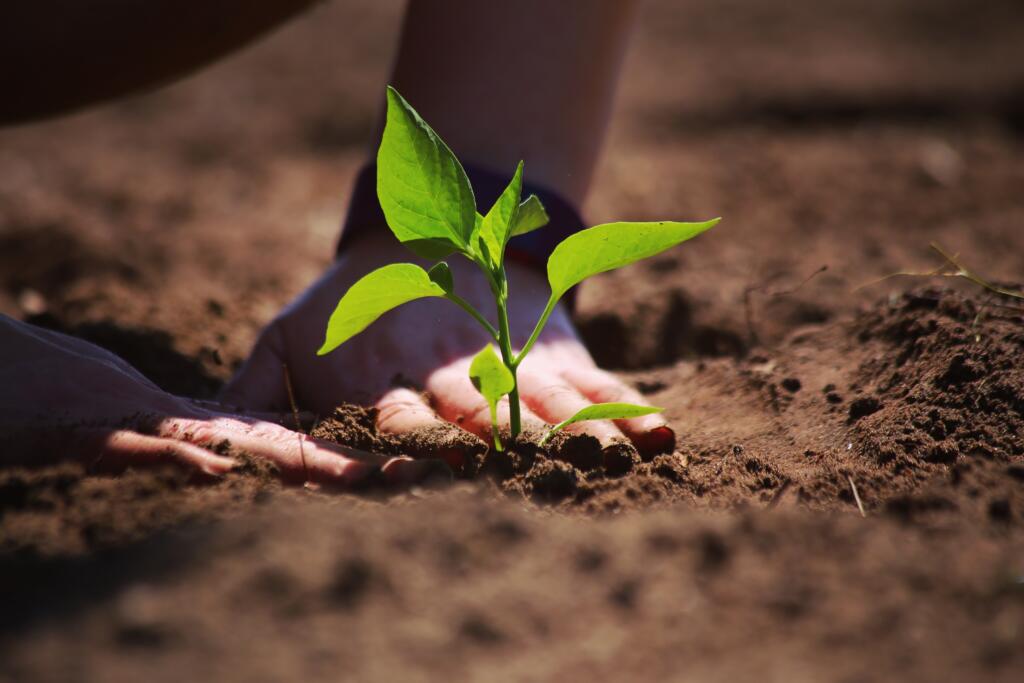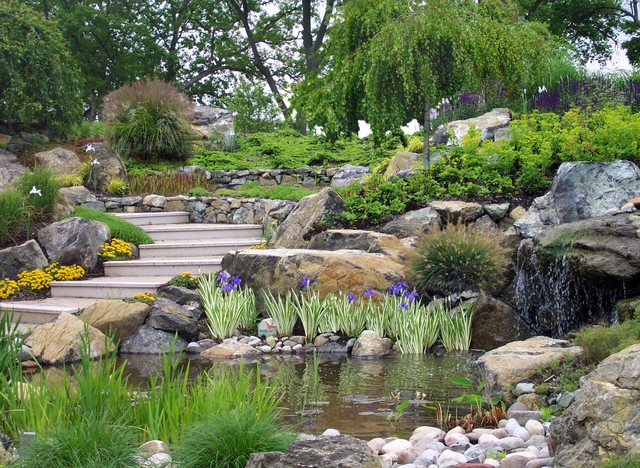First impressions are everything—especially when it comes to our lake homes. Curb appeal is, after all, one of the most critical factors when buying and selling homes. But regardless of whether your house is on the market, we still aspire to generate a welcoming experience for ourselves and our guests. So whatever your taste—modern, transitional, traditional, cozy cottage—the entrance to your home should offer an inviting signature statement from the dwellers within.
There are many inexpensive ways to amp up your curb appeal surprisingly quickly and with minimal effort. Small changes can deliver significant impact. In addition, you’ll love the results yourself and will always look forward to coming home. So, if you want to put some wow factor into your curb appeal, check out these cost-effective changes that are sure to impress without breaking the bank.
Paint Power
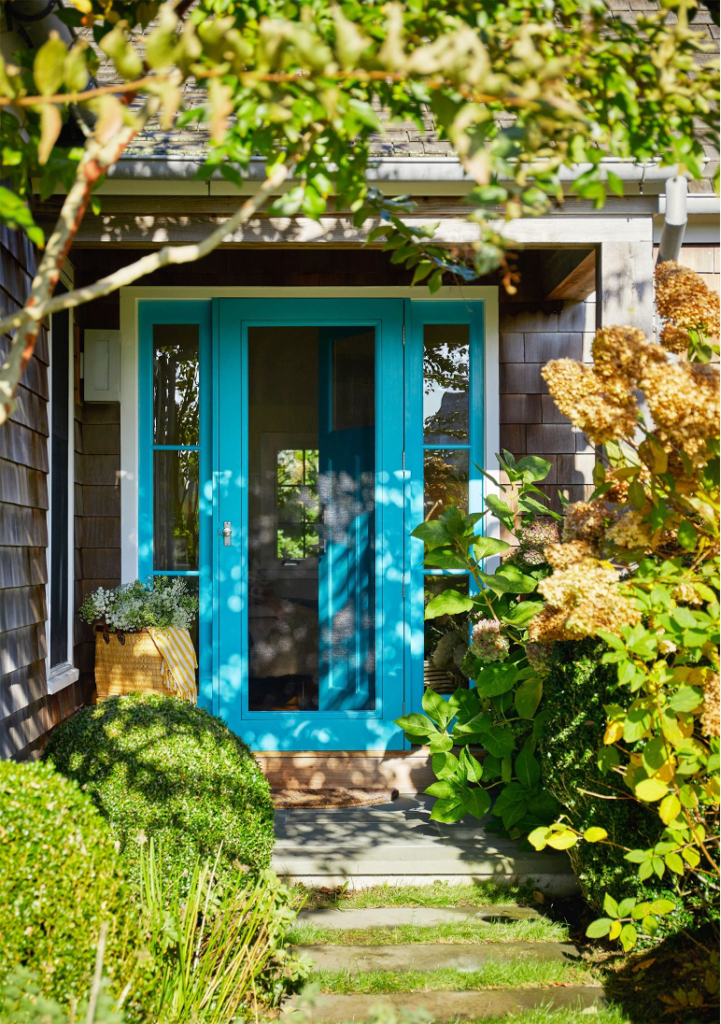
There’s nothing like the transformative power of paint to create an instant refresh for your front door. Just look at how eye-popping and visually pleasing this turquoise door becomes when backdropped by gray shingled siding and lush green foliage. A fresh coat of paint packs a powerful punch, and there are endless shades to choose from. Try a vibrant red or bright orange for a modern edge that looks striking against a dark neutral backdrop. When selecting your shade, try a complementary color that will pop against your home’s exterior. A sleek, elegant black also makes a bold statement and lends a sense of refinement to contemporary and traditional styles. Beautifully grained natural woods are also an option if you want to create contrast without actually painting.
Next-Level Locks & Hardware
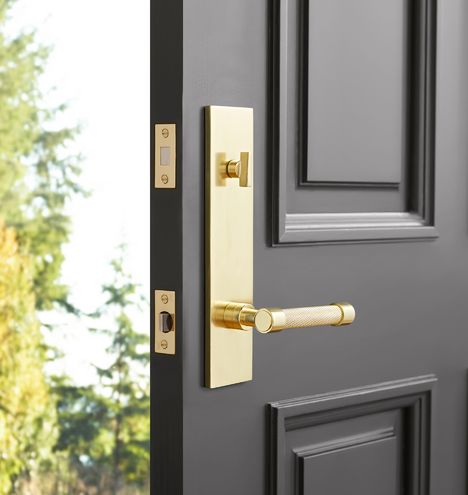
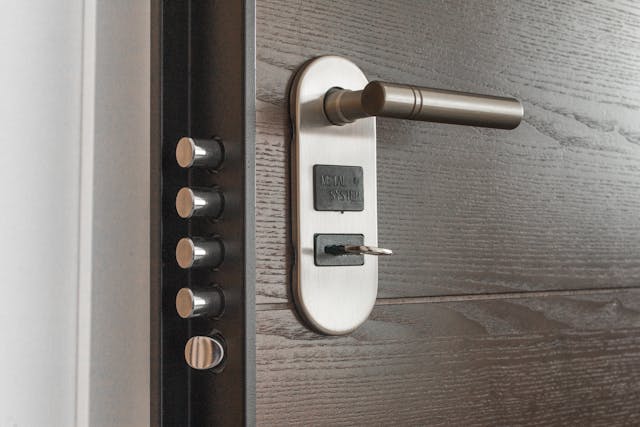
For an even more impactful door makeover, consider upgrading your hardware. This simple fix will create big drama and acts as the jewelry for your front door. Choose a finish that complements the style of your home’s exterior and pairs effortlessly with the color of your door. Brass, bronze, and matte black fixtures befit both rustic and modern looks. In addition, polished and brushed metals pair well with a multitude of styles, including traditional and contemporary. The shape of your hardware also contributes to the overall aesthetic, from clean and streamlined to curvaceous and ornate.
You can also consider upgrading your security with an integrated smart lock that you control via an app on your phone. There are many types to choose from that will blend harmoniously with the style of your front door.
Liven Your Landscape

Do you have a lackluster landscape? Take inventory and start cleaning it up with simple things like weeding, trimming, watering, and replanting. Aside from your yard, you can dress up your front door with luxuriant potted plants and flowers that will frame the entrance to your home. Create a symmetrical look with pairs of matching plants and pots, or display colorful blooms for an eye-catching accent. You can even switch them out seasonally to create unique looks for spring, summer, fall, and winter.
Stylize Your Address

It’s all in the numbers, as they say. In this instance, it’s your house number. Make sure yours is attractive to look at and easy to read for guests and delivery services. If it’s looking unpolished or outdated, replace it with a style that’s more appealing and befitting to your home’s exterior. You can choose from a range of styles, including ultra-modern numerals and 3-D numbers illuminated by LED lights for a brilliant display. For more rustic and traditional looks, choose classic or vintage styles. The options are endless, and you can easily find one that suits your taste and budget.
Thrive Under Pressure
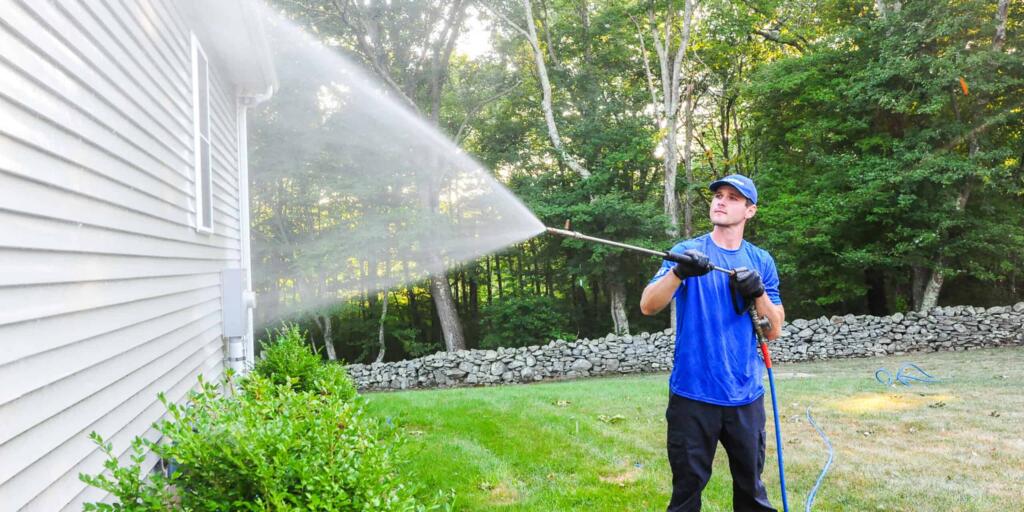
If your exteriors look dull and dirty, it’s time for a pressure wash. You can hire someone to do this for you, or you can rent or purchase a pressure washer if you’re more of a do-it-yourselfer. This is an excellent technique to scour away grime and mildew from your siding, driveway, and walkways. It’s also an efficient way to clean decks, patios, and even outdoor furniture. To go the extra mile, consider re-staining your wooden deck to enhance the beauty of the grain and protect it from the elements.
Enlightened

One of the most dynamic enhancements you can make to your home is exterior lighting. This sets the tone for your home’s curb appeal at night and also highlights the architectural features. You can illuminate almost any area with sconces, uplighting, and overhead lighting, especially at the front entrance. Accent with lawn lighting to set your landscape aglow and create a welcoming ambiance for friends and neighbors.
Shoreline Appeal

As lake homeowners know, your home has another curb that needs constant attention. Showing off your home from the water is often the most important view, so ensure your lake landscape and shoreline are tidy and well-manicured. If you have a dock, refresh the paint when it looks worn, and do the same with your outdoor furniture.
Now is the perfect time to upgrade your curb appeal and get ready for another glorious season at the lake. So, what are you waiting for? Dive in and enjoy the new look you create.
Enjoy this article? You might also like: 5 Things to Know About Selling Your Lake House in the Fall


